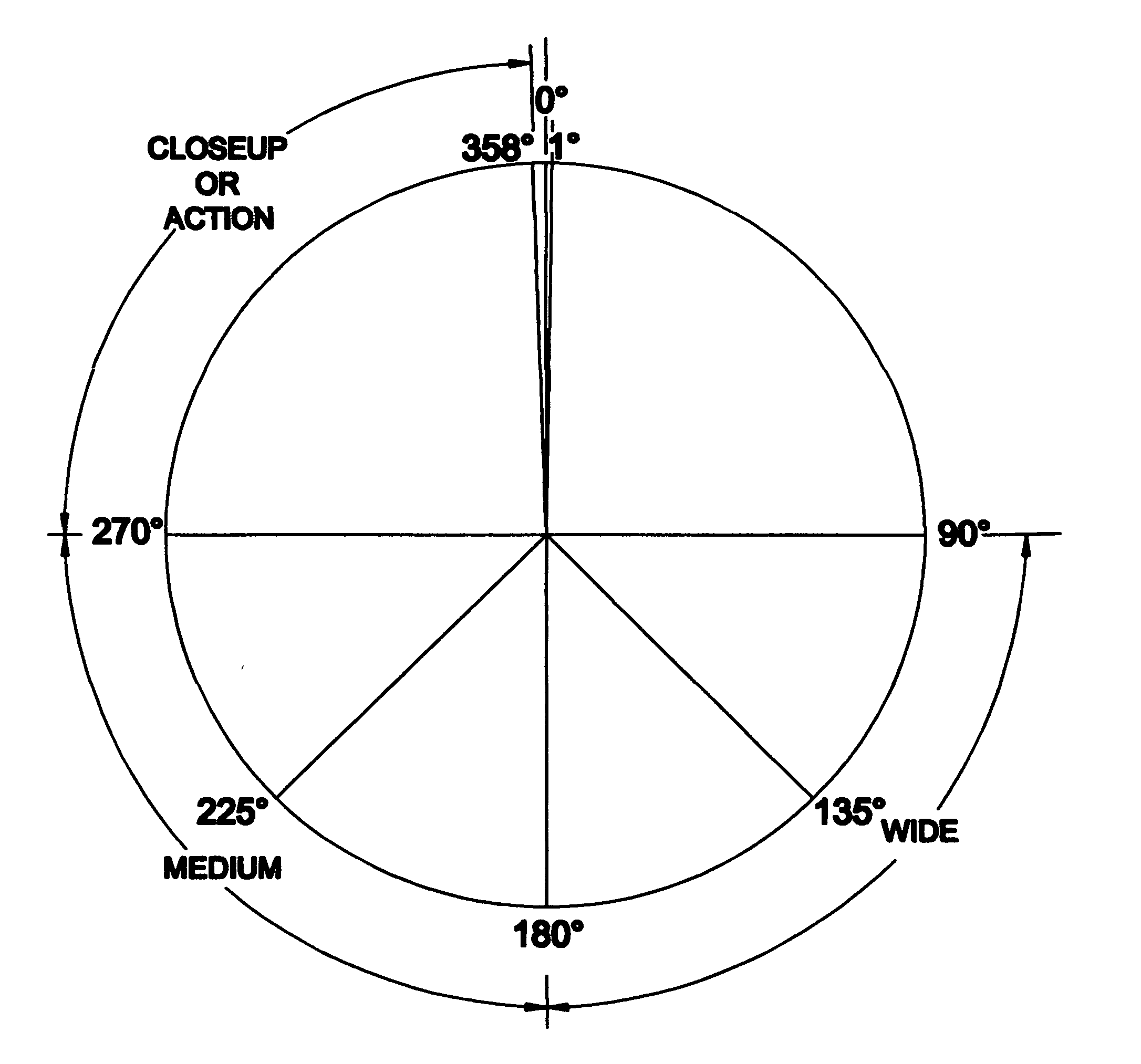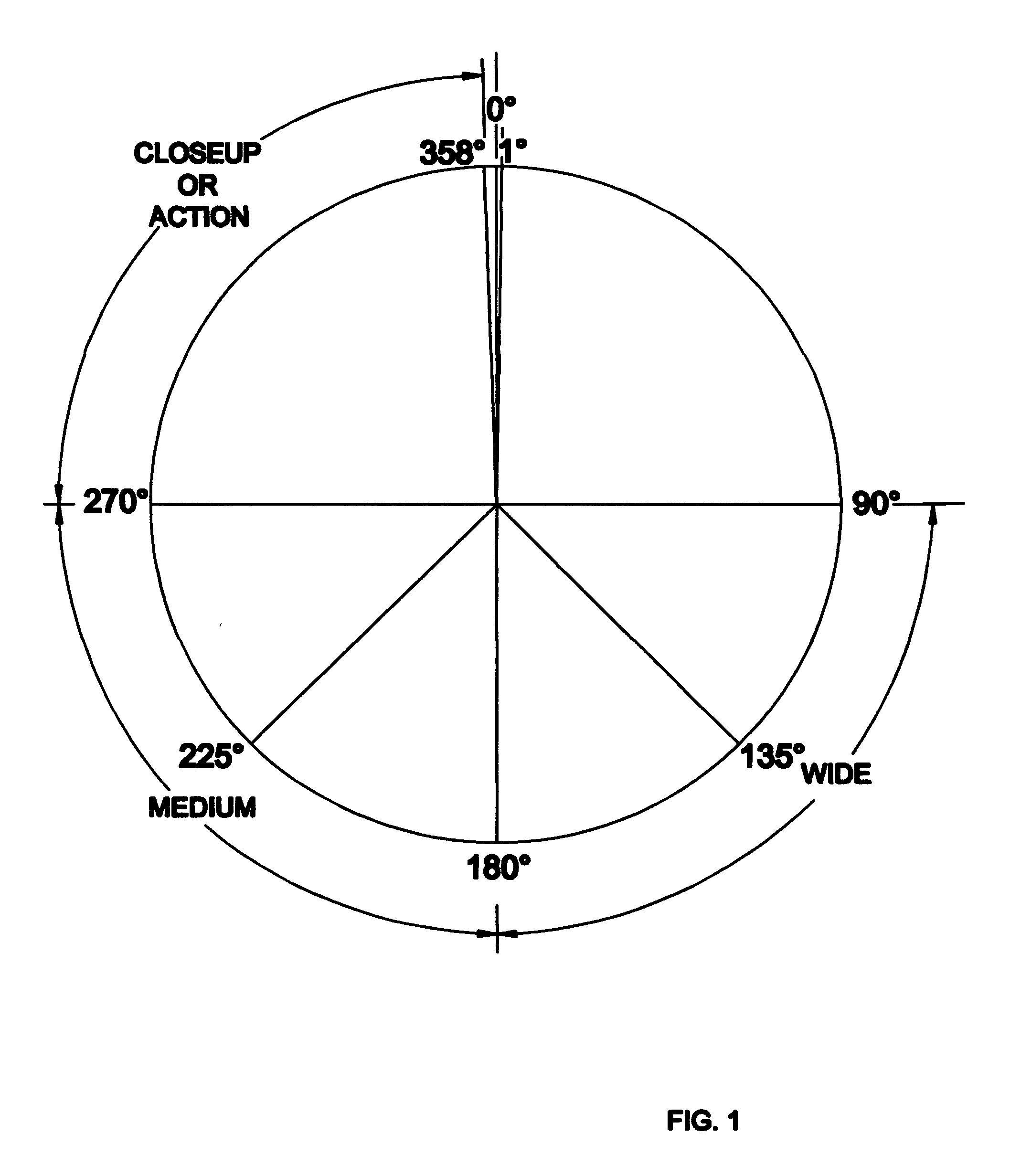Method for selectively imparting a cinematic appearance to motion pictures photographed and exhibited at high frame rates
a technology of motion pictures and frame rates, applied in the field of motion pictures, can solve the problems of reducing image quality, artifacts reducing image quality, and traditional film photography and projection at twenty-four frames per second does not produce optimal experience for viewers, and achieves stress in viewers, high frame rate, and realistic appearance
- Summary
- Abstract
- Description
- Claims
- Application Information
AI Technical Summary
Benefits of technology
Problems solved by technology
Method used
Image
Examples
Embodiment Construction
[0028]The object of this invention is to deliver to theatrical motion picture audiences an enhanced experience that appears more realistic, both spatially and temporally, than conventional film or digital photography at 24 frames per second can deliver; yet not as realistic as the “soap opera” appearance of live television. An optimal amount of realism in a motion picture can be obtained by increasing the frame rate; for example to 48 frames per second for photography and projection, and by adding an appropriate amount of motion blur to temper the hyper-realism that the audience would otherwise see as a product of exhibition at that frame rate, as the producer of the motion picture desires.
[0029]Conventional film image capture and projection at 24 frames per second suffers from several artifacts, of which motion blur is only one. With film photography, light reaches the film for only half of the time and the shutter on the camera is closed for the other half. The required shutter op...
PUM
 Login to View More
Login to View More Abstract
Description
Claims
Application Information
 Login to View More
Login to View More - R&D
- Intellectual Property
- Life Sciences
- Materials
- Tech Scout
- Unparalleled Data Quality
- Higher Quality Content
- 60% Fewer Hallucinations
Browse by: Latest US Patents, China's latest patents, Technical Efficacy Thesaurus, Application Domain, Technology Topic, Popular Technical Reports.
© 2025 PatSnap. All rights reserved.Legal|Privacy policy|Modern Slavery Act Transparency Statement|Sitemap|About US| Contact US: help@patsnap.com


